Before you had children, did you ever fantasize about all the wonderful, enriching activities you would do together?
Perhaps you had aspirations of tending a garden using the compost you create from kitchen scraps, which, of course, come from the many types of vegetables you prepare for your family each night. Vegetables your kids eat happily.
Maybe you imagined going on long bike rides as a family, with nobody complaining about being thirsty or bored, and no need to promise ice cream as a reward for finishing.
Or, like me, an art history buff, you might have daydreamed about taking your kids to museums, where you impress everyone with their impeccable behavior and enviable ability to speak at length about art and history.
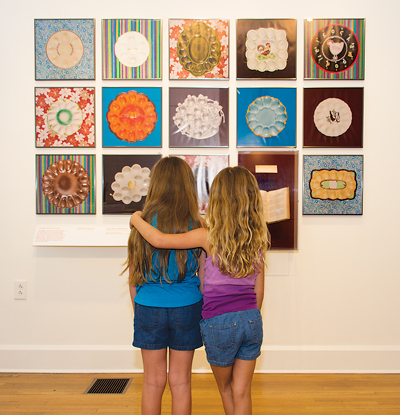
It all looked so good in your head – until you actually had the children. As said children became mobile and verbal, these tasks seemed to require much more patience and stamina than you could muster on a typical day.
Many of us are wary of taking our kids to museums for fear that they will bother other visitors. More than one friend has told me she is not brave enough to do it, and I completely understand. Even though I have worked in museum education, I’m daunted by the prospect.
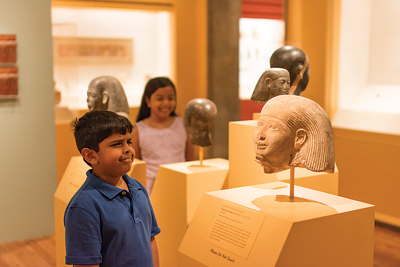
Museums can be intimidating places with people who seem serious, intellectual, and unappreciative of little people who speak loudly and sometimes move in erratic, unpredictable ways. When parents let fear keep them from taking advantage of local cultural resources, however, they sacrifice an opportunity to help their kids develop into well-rounded and happier young people.
Lori Coffey, early childhood educator at Virginia Museum of Fine Arts (VMFA), has been working hard to connect with families who have young children because, as she explains, “a child’s brain grows 90 percent in the first five years, and visiting museums can build connections and make pathways that will impact them throughout their lives.” Recent studies have found that children who visit museums as kindergartners score higher in third-grade reading, mathematics, and science achievement tests than those who do not.
When we take children to museums, we also provide non-electronic options for entertainment. Our kids might then choose independently to spend a free afternoon wandering a museum, engaging their brains in a way that passive entertainment cannot.
Exposing our kids to museums helps them grow into adults who will continue to preserve our history and our treasures. Caroline Legros coordinates educational programming for schools at the Virginia Historical Society (VHS). She agrees that visiting museums is important because it creates opportunities to communicate and make connections. “By talking with your children about those who lived before us, you can help them understand how they fit into the bigger story of their community’s past,” says Legros.
Manage your expectations
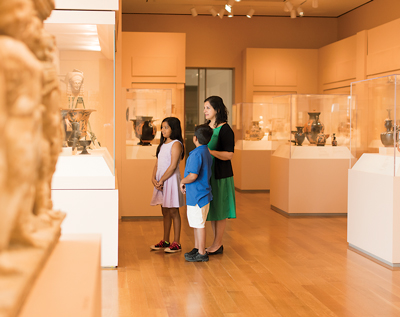 How can visiting a museum with your child be better for everyone involved? First and foremost, try to have reasonable expectations. Very few kids will be able to spend hours wandering through a museum, remembering to walk, not run, keeping their hands to themselves, and staying interested in the exhibits. If you are eager for a slow, relaxing afternoon, it might be best to go alone. Taking children to a museum is a very different experience, but it can be just as enjoyable, albeit in a different way.
How can visiting a museum with your child be better for everyone involved? First and foremost, try to have reasonable expectations. Very few kids will be able to spend hours wandering through a museum, remembering to walk, not run, keeping their hands to themselves, and staying interested in the exhibits. If you are eager for a slow, relaxing afternoon, it might be best to go alone. Taking children to a museum is a very different experience, but it can be just as enjoyable, albeit in a different way.
The most important and easiest way to manage your expectations is to keep your visit short. Amy Farina, a preschool teacher at Canterbury Nursery School, regularly takes her class of 4-year-olds to VMFA, and she has found that the trip goes more smoothly when they spend just about an hour there. They move quickly through the galleries and focus for just a few minutes on each work of art.
Keeping your visit short probably means you will have to skip the audio tour. Shannon Petska, director of public programs at the Valentine Museum, says, “As an adult, I find 45-plus minute guided tours challenging, so I always expect that kids do, too.” Very few children enjoy being lectured to for lengths at a time.
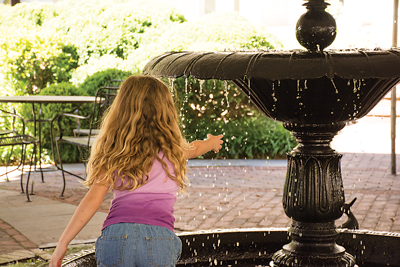
When visiting a museum, it also helps to keep in mind how your children perceive the experience. Legros of VHS encourages parents to understand their children’s perspective literally: “Crouch down to see what’s in your child’s sight line and talk with them about observations they’ve made.”
Know your child
Some days, or even stages of development, just aren’t right for a visit to an art or history museum. Farina reminds parents that it’s important to gauge your child’s behavior and interest on a particular day. She has found that during some field trips, a student struggles to speak softly or keep his hands to himself. If it just isn’t a museum day, that’s okay. Accept that it isn’t working, and try to find ways to still make the experience enjoyable.
Farina, Petska, and Coffey (all parents themselves) recommend visiting the café or outdoor spaces. When your child acts up, give her a chance to burn off some energy outside. It may be even more effective to start the visit outside, as Farina does, so that the kids can run and touch things before they enter the galleries. If a diversion helps calm your child, go back to the exhibits. If not, try again another day, knowing that your child will walk away with positive feelings about the museum and will want to return.
Hannah Gilfillan, mother of two who lives in Midlothian, found that for her oldest, there was an entire developmental stage when museum visits just weren’t any fun. When he was an infant, she enjoyed taking him because he was content to play with toys in his stroller. When he became more mobile, however, Gilfillan found that it no longer seemed like the right environment because he was hard to contain and wanted to touch everything. Thankfully, that stage has passed, and their family can enjoy visiting museums again for short periods of time. She still finds it helpful, though, to bring a grown-up for each child, and to use a stroller in case her younger child has trouble following directions and needs her own space.
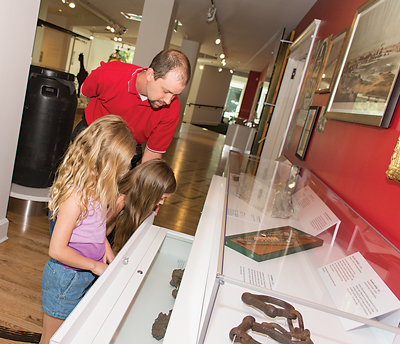 Prepare your children for the experience
Prepare your children for the experience
Museum visits go much more smoothly when children know what to expect. Coffey of VMFA advises referencing familiar places and experiences before making a museum trip. “Explain that a museum is like a library; we don’t yell or run, but we don’t need to be really, really quiet.” Visiting a museum can also be compared to going to church. As with church, visitors need to be quiet so that other people can concentrate, and kids aren’t allowed to run free. Midlothian-area homeschooling mom Kristen Stone compares visiting a museum to going to Grandma’s house. In both places, it is important to respect others’ property. Like visiting a library, church, or relative’s house, going to a museum helps kids flex their self-control muscles, and that practice pays off as they get older and encounter more situations that require similar styles of behavior.
Coffey suggests talking ahead of time about how an art or history museum is different from a children’s museum or a science museum. At children’s museums, kids are able to touch and even play with many of the objects, but in art and history museums, kids are not allowed to touch anything on exhibit. Explain why it’s important to treat museum objects carefully, and enlist kids’ help so they feel like active participants in the museum’s preservation efforts.
Before Farina takes a field trip with her preschool class, the children practice their museum etiquette, skills like keeping their hands clasped together. “Sometimes the best-behaved kids whom you would never expect to misbehave do something surprising,” she explains, so those reminders can be helpful for everyone.
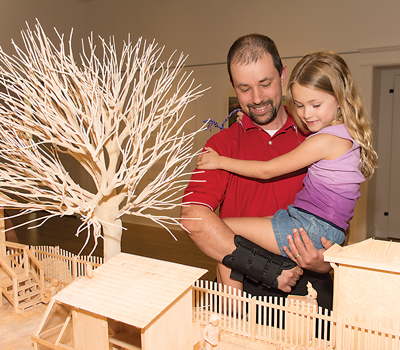
Coffey also finds that choosing terminology carefully can make a difference. Whenever she discusses sculptures, for instance, she uses the word platform instead of base. “Bases make kids think of hide-and-seek,” she explains, and no one wants to make that association when accompanying kids through a room filled with priceless objects.
It’s also a good idea to prepare kids in advance for seeing nudes in sculptures or paintings. While wandering through galleries, I have seen young kids become so disconcerted by seeing an unclothed figure that they can’t focus on anything else. Before the visit, discuss with your kids that artists often depict nude figures for many reasons, such as to follow classical tradition, to create a sense of timelessness, and to demonstrate their ability to render different parts of the body.
Your children are also more likely to learn from the experience if they know in advance what they will be seeing. Farina recommends buying postcards from the museum’s gift shop or downloading images from a website before visiting a museum. Hang the pictures around the house to expose the kids to some of the objects they will see. You might also read children’s books about the artists on exhibit. When you actually visit the museum, seeing something familiar will help your children feel comfortable and successful.
Take advantage of resources
Parents are fortunate that our wonderful local museums have already worked to make their collections accessible and engaging to families. Before you go, call ahead or visit their websites. Legros explains that online exhibitions make it easier to plan the visit ahead of time: “VHS’s central exhibition, The Story of Virginia, can be explored in its entirety on Google Maps. After your family arrives on-site, encourage your children to make connections between the images they saw online and the actual pieces in the museum.”
 The VMFA website has extensive tools online, including a plan-ahead tab, where you can download kids’ activity guides, teacher resource guides, gallery maps, and scavenger hunts. Coffey encourages visitors to talk to the guards or museum associates. They can answer questions and help you find other objects that might interest your children.
The VMFA website has extensive tools online, including a plan-ahead tab, where you can download kids’ activity guides, teacher resource guides, gallery maps, and scavenger hunts. Coffey encourages visitors to talk to the guards or museum associates. They can answer questions and help you find other objects that might interest your children.
The Valentine, Petska explains, “has created an activity book with something for a child to do in each area of the museum.” They also have a website that provides detailed information about their collection, archives, and upcoming events.
Museum-sponsored activities, like story times and classes, can help you introduce your child to the museum environment with little effort on your part. Gilfillan finds that attending children’s classes and activities reminds her kids of appropriate behaviors and helps them feel comfortable in the space. These activities can also help parents learn how to interact with their kids in the galleries because the teachers model appropriate techniques for talking about exhibited objects.
Make it fun
Of course, you want your kids to learn something when they visit a museum, but it’s just as important, especially the first few times, that they have fun. If they enjoy the experience, they’re more likely to want to go back, and eventually they’ll learn something (although they will probably
learn a thing or two while they’re having fun the first time!).
Thankfully, what is fun for kids will likely be fun for you, too. Says Petska, “Museums make a lot of assumptions that museum-goers are highly educated, arts, and history-versed folks and, while that is true to some extent, the average person isn’t interested in all of that. They want to hear an interesting story, see new things, and make a connection, just as any child would.”
Find objects that interest your children, Legros suggests, and avoid making your kids’ museum visit seem like a chore. She reminds parents, “Don’t forget to leave room for fun, imagination, and spontaneity in your experience. Even if you have a plan in mind for your trip, don’t be afraid to let your kids’ enthusiasm guide your path through the galleries.”
Like another parent I talked to, I have enjoyed museum visits more when I have toured the exhibits with one of my children at a time. The kids tend to behave better without their siblings there, and I can ask them questions and engage them in conversation more easily. The museum visit also becomes a special bonding experience. If it isn’t possible to take one child at a time, try to see at least one object that piques each child’s interests so they all enjoy the experience.
It’s also important to remember, Coffey explains, that visiting a museum is about more than just viewing works of art. “Kids might be surprised to hear,” Coffey says, “that they are encouraged to experience nature while looking through the skylights and glass walls. They can go out to the gardens and run in the grass, and put their hands in the fountains.” Coffey concluded our interview with a final, reassuring thought. “Don’t worry too much. We
want kids to be in the museum.”




